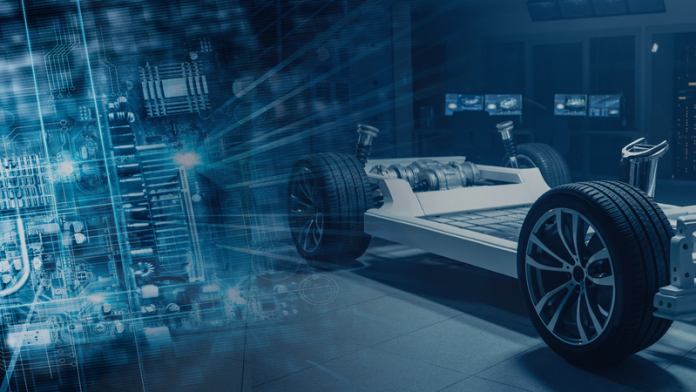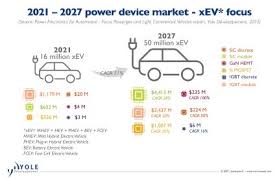Key components, such as power electronic devices and battery cells, will remain the critical issues for OEMs. A strong focus is being shifted to efficiency from a holistic view, to which power electronics can greatly contribute.
“We expect a 21% CAGR between 2021 and 2027 for the global xEV market, accelerating across all market segments,” says Yole’s Yu Yang, “along with fast-growing BEV adoption, hybrid technologies will also grow substantially. Indeed, the different technologies’ penetration depends on the region.”
The power electronics market is strongly boosted by applications such as inverters, OBC, and DC to DC converters.
The supply-demand balance issue is more acute for SiC, for which capacity is expanding rapidly. The rapid electrification trend is creating a whole new supply chain, far from conventional internal combustion engines.
It includes a new electric powertrain consisting of batteries, e-motors, inverters, and other supportive sub-systems, including OBCs, DC/DC converters, PDUs, and other auxiliaries.
For most of the sub-systems, power electronics components are essential. This attracts a group of new suppliers, some even from industries other than automotive.
This ‘invasion’ is more evident in emerging countries and regions, particularly China. Remarkably, more vehicle-making OEMs are vertically integrating. Some merge the responsibility for systems typically produced by Tier 1 component suppliers into OEMs’ in-house facilities. Some even take over device design and manufacturing, normally the realm of Tier 2 suppliers.
The main drivers of this disruptive trend are key product supply chain security and the rather high speed of innovation of BEVs, which is better supported by vertical integration.









